Blog Home
My Unforgettable Day with the Red Arrows
Written by Jonathan Patterson.
I’ve always been captivated by the Red Arrows, and the chance to see them up close at RAF Waddington was a dream come true.

Our day began in the early morning as we arrived at the base, passing through tight security checks with a sense of mounting excitement. We eagerly awaited our Red Arrows escort, who would take us to the heart of their operations.

As soon as we stepped off the Red Arrows mini-bus, the deafening roar of jet engines filled the air. We hurried to the viewing point only metres away from the runway, as the Red Arrows formed up and took off in a stunning, orchestrated formation.

For the next 20-30 minutes, the Red Arrows captivated us with their brand-new display for their 60th Diamond Season. Their daring barrel rolls, incredibly close manoeuvres, and crowd favourites like the Tornado left us in awe. The nine Hawk Jets flew overhead in an awe-inspiring sight, the thunderous noise was incredible. Starting with Red 1, each jet gracefully peeled away to land, marking the end of an unforgettable performance.

In need of a moment to absorb the experience, we decided to grab a cup of coffee. Within five minutes, a group of officers entered, with distinct marks around their ears from wearing some sort of helmets. It was then that I realised these were the Red Arrows pilots themselves, casually grabbing their coffees in their Red Arrows mugs. I was in complete awe of these men, who moments ago were hurtling through the clouds at over 500 mph.
Our RAF contact informed us that we only had a few minutes before debrief with the pilots. Led by Red One, Jon Bond, the meeting was a fascinating insight into their meticulous process. Each pilot critiqued their performance, highlighting areas for improvement and discussing how to perfect their manoeuvres for the next sortie that day. I was amazed to learn that the Red Arrows conduct these sorties and debriefs three times a day, every day, to ensure their displays are flawless and maintain their public display authority.

Next, we had the privilege of meeting and interviewing Red 10, Graeme Muscat. He shared insights about the Red Arrows, their intense manoeuvres, their strong focus on teamwork, and how they are a beacon for Great Britain, flying the red, white, and blue all over the world.
We were incredibly excited to show Graeme the brand-new 50p coins specially made to celebrate the 60th Diamond Season of the Red Arrows. His elation was clear as he smiled and said, “I think it’s amazing… I can keep that one, right?”
Our day with the Red Arrows was nothing short of extraordinary. From witnessing their breath-taking display to meeting the pilots and learning about their dedication, it was an experience that left us deeply inspired. The Red Arrows continue to be a symbol of excellence, teamwork, and pride for Great Britain.
To commemorate this special occasion, a brand-new coin range has been released to celebrate 60 years of the Red Arrows.

>>> Click here to explore the complete Red Arrows 60th Anniversary Diamond Season coin range <<<
Operation Colour Scheme. The Fire Service’s Top Secret D-Day Mission.
2024 marks the 80th anniversary of D-Day. On 6th June 1944, the Allied Forces launched one of its biggest military operations – they came by land, sea and air and would eventually bring about the liberation of Europe and the end of World War II.
But as D-Day was being planned, more and more equipment was stockpiled in the South of England and needed to be protected, and that’s why the National Fire Service Commanders were tasked with a top secret mission of their own – Operation Colour Scheme.

Operation Colour Scheme: Protecting the Overlord Invasion’s Infrastructure
Operation Colour Scheme, a little-known but vital aspect of the Fire Service’s activity in World War II, involved moving 11,000 firemen and women and over 1,200 fire fighting vehicles to the South of England to protect resources being stored in rural areas.
In 1943, the German bombing offensive was at a lower level and so it was decided that fire fighting resources could be moved from areas in the North and the Midlands to areas in the South to cover sites that now required a higher level of protection, including:
- Logistical supply sites
- Harbours linked to the D-Day invasion – most notably coastal areas of East Sussex and an armada of ships in the lower reaches of the Thames
- Ammunition dumps
- Petrol pipe lines
The Colour Scheme – and what each colour meant
And to aid planning, England and Wales were split into 12 regions – with each region given a colour to represent the level of risk each region faced:
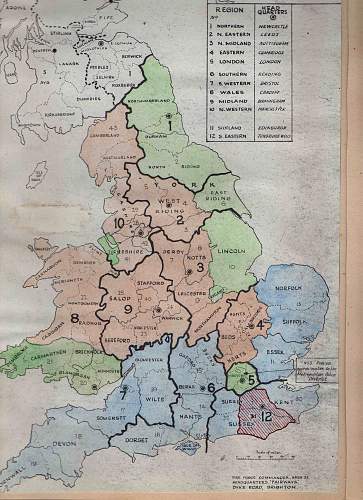
War Relics Forum
- Regions shaded Purple and Blue needed to be reinforced to above their maximum strength – the Purple regions were most impacted
- Regions shaded Green needed to be reinforced up to their maximum strength
- Regions shaded Brown were areas from which resources could be drawn from to provide for Purple, Blue and Green regions
The crucial role of the Fire Service during World War II
The war years proved to be the busiest for our Fire Brigades with fire fighters on the front line protecting communities during Air Raids and as part of Operation Colour Scheme.
Fire fighters were issued with one basic uniform; a steel helmet, rubber boots, trousers and waterproof leggings – although shortages saw some stuck with just Post Office uniforms!
The first air raid on London took place on 7th September 1940 and this would mark the start of The Blitz – where London endured bombings for 57 nights in a row. Most of the air raids took place at night, meaning fire fighters spent long hours extinguishing fire or dealing with explosions.
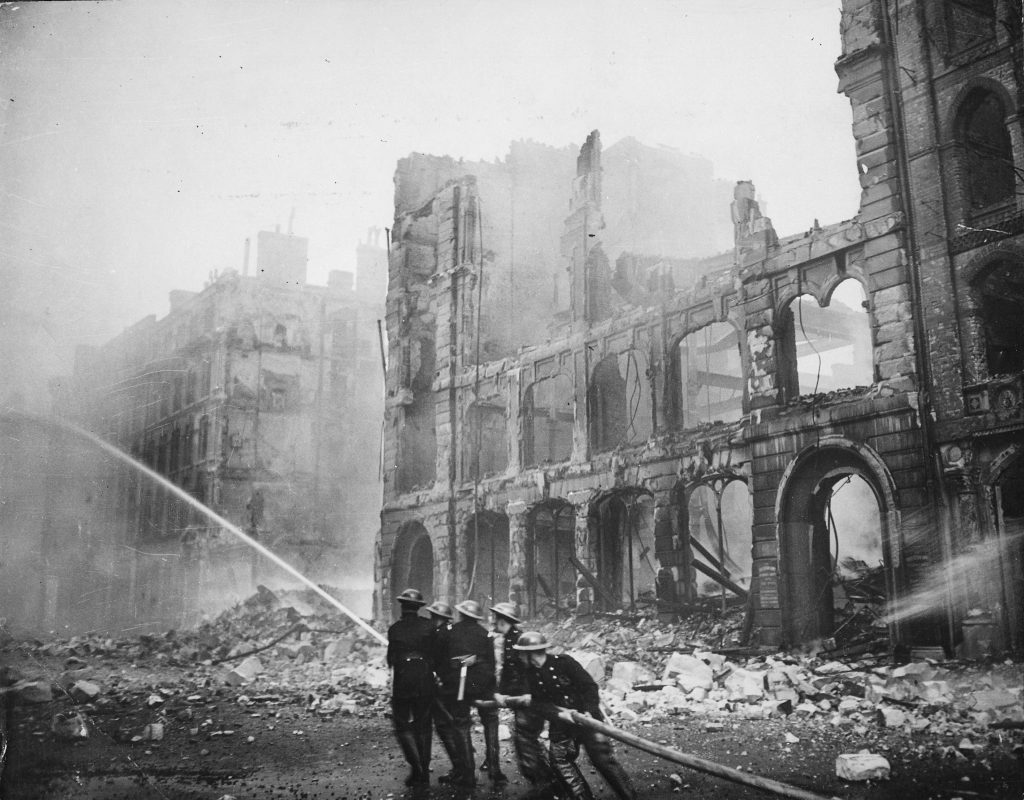
New York Times Paris Bureau Collection, Public domain, via Wikimedia Commons
In the first 22 nights of air raids, fire fighters had fought nearly 10,000 fires – and for many, this was their first experience of fire fighting…
And by 1943, over 70,000 women had enrolled in the National Fire Service, many becoming fire watches and drivers and managing the communications network.
Britain’s Prime Minister, Sir Winston Churchill honoured these great efforts and once said that the fire service “were a grand lot and their work must never be forgotten”.
The BRAND NEW History of the Fire Brigade 50p Collection
Issued to mark 200 years since the establishment of Britain’s first Municipal Fire Service, The History of the Fire Brigade 50p Collection shares the story of two centuries of heroic service.
Included in the set is the 1934 London Fire Brigade 50p Coin which depicts a World War II Fire Engine – a Dennis Chassis with an extendable ladder – in front of a background representing the city during The Blitz.

Each coin has been officially authorised by Buckingham Palace and King Charles III to pay tribute to the unsung heroes who have battled flames and saved lives for centuries.
A variety of specifications are available to order today from The Westminster Collection. Click here to view the COMPLETE range >>
The never-before-seen set of Branch Mint Sovereigns
Branch Mint Sovereigns are a captivating chapter in the world of numismatics, offering an enchanting glimpse into the rich history of gold coinage and the economic influence that spread across the British Empire and beyond. These coins, minted in locations outside the primary mint (the Royal Mint in London), played pivotal roles in the economies of their respective regions.
This blog will take you on a journey through the history, significance, and key dates of Branch Mint Sovereigns, including those from Australia, Canada, South Africa, and India.
>>> Click here to secure your Never-Before-Seen British Empire Sovereign Collection <<<

To distinguish between each of the many Royal Mint locations across the British Empire, gold Sovereigns were for many years marked with a letter symbolising the city or country of their origin. Most gold Sovereign coins were produced in London such as The London Mintmark Sovereign, struck at Tower Hill, and since the 1970s in Llantrisant, South Wales. These coins are unmarked, but many had a small mark above the year of production to indicate their origin.
The concept of Branch Mint Sovereigns emerged in response to the British Empire’s expansive reach and the need for a stable and uniform currency across its vast territories. The Royal Mint, unable to meet the burgeoning global demand for sovereigns, established branch mints in various colonies. These mints not only facilitated local transactions but also promoted economic stability and integration within the Empire.
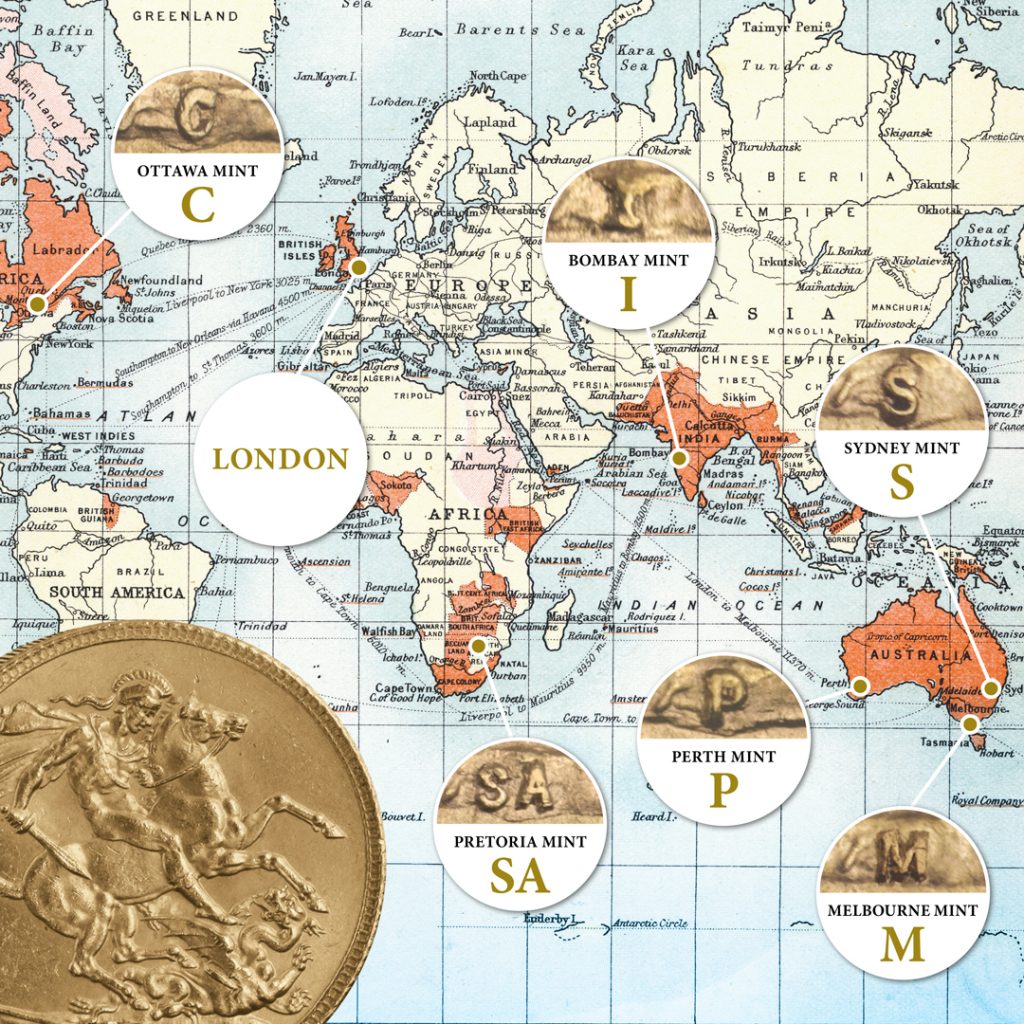
Australian Branch Mints
Australia became a focal point for branch mint sovereigns due to its rich gold deposits discovered during the 19th century. Three main mints operated in Australia:
- Sydney Mint (1855-1926): The first Australian branch mint, it produced sovereigns featuring a unique design with “Sydney Mint” on the reverse until 1870, after which it adopted the standard St. George and the Dragon reverse. These early coins are treasures of history, each telling a story of Australia’s gold rush era. Sovereigns produced in Sydney featured the “S” mintmark.
- Melbourne Mint (1872-1931): Known for its production consistency, the Melbourne Mint produced sovereigns with the “M” mintmark. These coins are prized by collectors for their exquisite craftsmanship and historical significance.
- Perth Mint (1899-1931): The Perth Mint also produced sovereigns marked with a “P”. Its coins stand out for their quality and the rich history of Western Australia’s gold mining legacy.
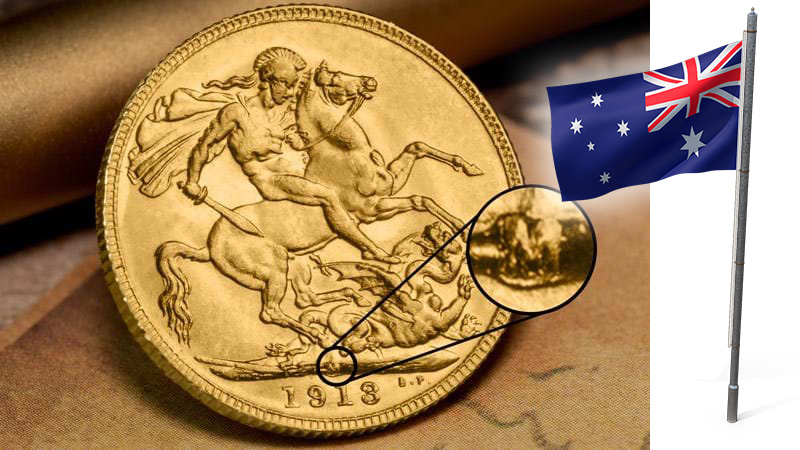
Canadian Branch Mint
The Ottawa Mint, now the Royal Canadian Mint, was established in 1908. Canadian sovereigns, produced between 1908 and 1931, are distinguished by their “O” mintmark. These coins are a testament to Canada’s important role in the British Empire, especially during the First World War. Each sovereign from this era carries with it the story of a nation coming into its own on the global stage.
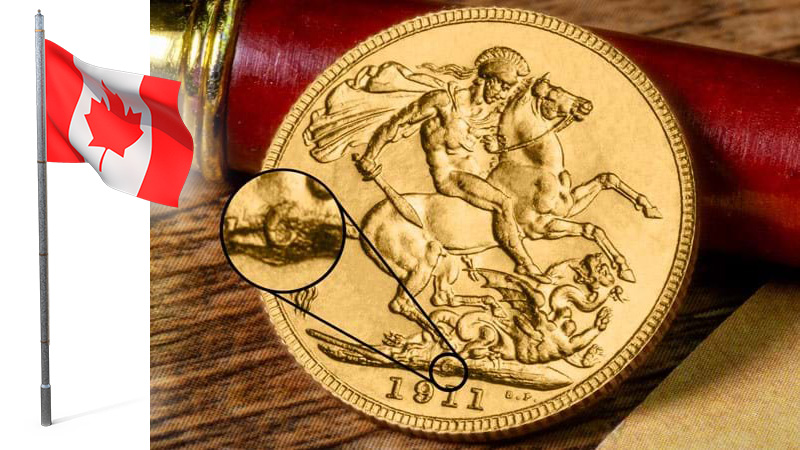
South African Branch Mint
The Pretoria Mint began producing sovereigns in 1923, bearing the “SA” mintmark. These coins are significant due to South Africa’s prominent role in gold production. Sovereigns from the Pretoria Mint circulated widely, symbolizing the region’s economic might and the depth of its natural resources.
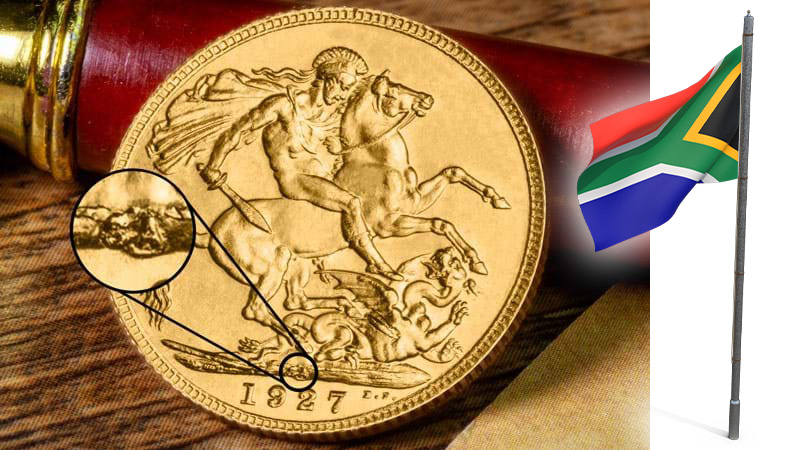
Indian Branch Mint
The Bombay Mint produced sovereigns for a brief period from 1918 to 1919. These coins, marked with an “I” mintmark, are rare and hold a special place in the history of British India. They were minted to address the wartime demand for gold coinage and reflect India’s pivotal role in the British economy. Each coin is a rare gem, representing a fleeting yet crucial moment in history.
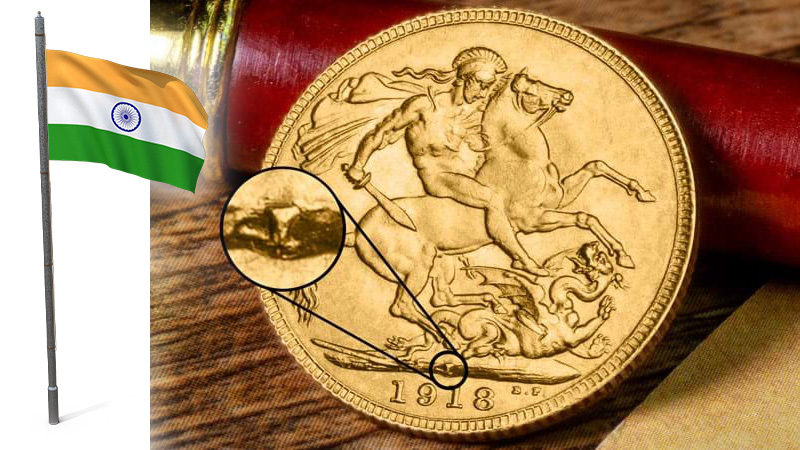
Branch Mint Sovereigns offer a fascinating glimpse into history, connecting the economic dots of the British Empire. From the goldfields of Australia to the financial hubs of Canada, South Africa, and India, these coins represent not just currency but also the economic and cultural exchanges of their time. Collectors and historians alike value these coins for their beauty, rarity, and the stories they tell about an era of global trade and imperial reach.
Dive into the world of Branch Mint Sovereigns with the Complete set of SEVEN ‘Mintmark’ Sovereigns, and let each coin take you on a journey through history. Each Sovereign has been handpicked to complete a set of all seven different mintmarks and all feature the official portrait of George V on the obverse.
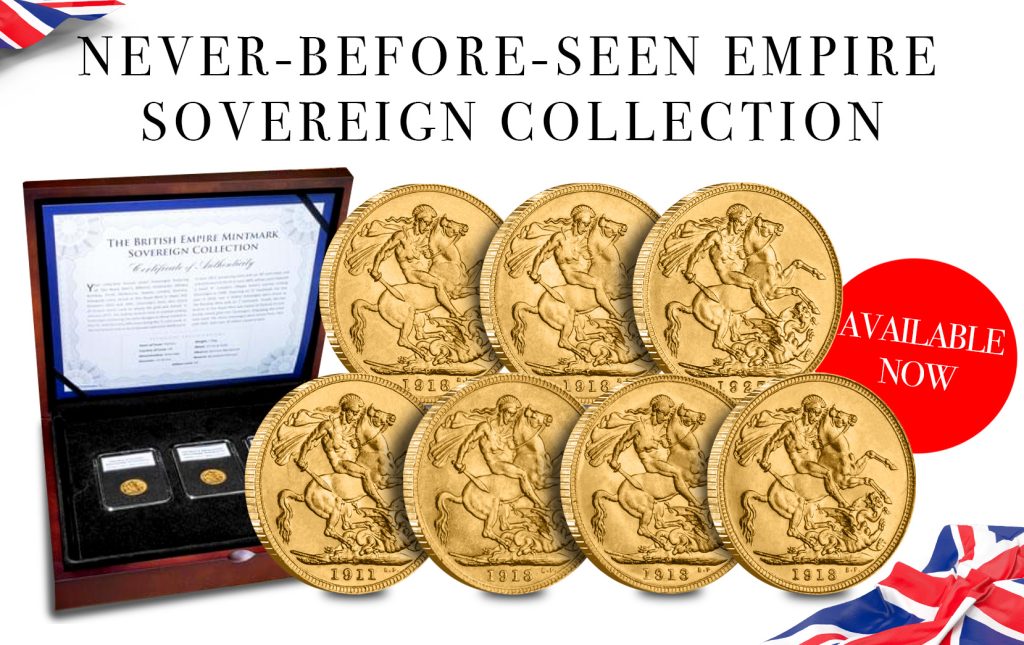
>>> Click here to secure your Never-Before-Seen British Empire Sovereign Collection <<<
